Challenges of learning Arabic in the UAE - even for Emiratis
Choosing a school for a child is a difficult choice for any parent, but especially hard for local families who want the best of both worlds – a well-performing school and an Arabic-centred curriculum.
At present, only one Ministry of Education curriculum school in Abu Dhabi is rated by the Abu Dhabi Education Council (Adec) as good.
The rest fall into the satisfactory, unsatisfactory or poor categories.
Arabic is not easy to learn when its use is restricted to the classroom for just a few hours a week. But by choosing an Arabic-language school that follows the ministry curriculum, most parents are forced to choose one that is lower rated.
It is no wonder then that Al Bashair Private School in Musaffah is as popular as it is. It caters for almost 1,300 pupils, half of them Emiratis.
“The pupils learn to think in their own language, not somewhere in between,” says Sawsan Tarabishy, the school’s principal, who was born and raised in the United States.
“It’s really hard to think in one language and not be taught in it. You need to express yourself and you can’t always get that creativity out, and that excellence.
“You have a society where everything is being spoken in English and you must create that Arabic pride in a child, that their language is great and essential for them as a people and as a nation.
“What makes this school significant is, it is a high achiever. There is a lot of enrichment in the curriculum.
“Our director of the Arabic curriculum sees what the English curriculum wants and she uses that to create a sort of curriculum that makes the Ministry of Education curriculum stronger.”
In a grade 3 classroom, a female teacher sits on the floor underneath a white board, with about 20 children around her in a semi-circle.
They are practising what are known as sight words – those that are commonly used and should be memorised by sight. As with most of the school’s resources, the sight-word cards were made by the teacher.
The teacher holds up a card with “ma h’a tha” written on it, which means “what is this?”.
“Let’s start,” she says in Arabic. “You have 20 words and the time is ticking.”
Adec’s latest report on the school, released after an inspection in November last year, shows students’ attainment in all subjects “far exceeds UAE levels”.
“The quality of teaching is good,” the report says. “It is typical for students in all grades to experience briskly paced, challenging, well-differentiated lessons, with significant opportunities for active participation.”
The biggest problem for ministry-curriculum schools is a lack of resources to enrich the work and make the teaching more interesting and effective.
To accompany the English, Canadian and American curriculums there are endless resources to help teachers provide a high level of education.
There are hundreds of companies around the world printing up-to-date textbooks and all of the necessary resources to go along with them.
But with the Arabic curriculum there are very few available so responsibility falls to the individual schools and teachers to provide ways of enriching the curriculum beyond just its basic level.
Judging by Adec’s ratings, it seems Al Bashair is the only school to go the extra mile to give its pupils the best education.
The effort made by the 170 teachers is evident in every classroom and corridor. Everything pinned up on the walls is handmade and there are full storybooks printed and stapled together.
Younger children use dice to determine which questions to answer on their worksheets, while others are busy glueing different Arabic symbols into the correct sentences.
All of this has been invented and created by the teachers, who have regular meetings to discuss best practices and lesson plans.
Lesson planning is strong, the Adec report says, more so than in other ministry schools
Read more: http://www.thenational.ae/uae/education/challenges-of-learning-arabic-in...
Follow us: @TheNationalUAE on Twitter | thenational.ae on Facebook

